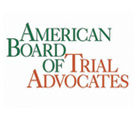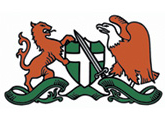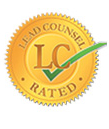Sustaining an injury as a pedestrian can be a traumatizing experience. You could be fighting for your life or living with a disability and piling medical expenses from the treatment you receive.
At one point, you will have to deal with the insurance company, which can make or break your case. Insurance companies have contracts with vehicle owners to finance damages from an accident up to a certain limit.
Insurance companies work to reduce the limit as much as possible to have lower liability on their end.
Dealing with the insurance company on your own, especially in the early days after the accident, can ruin your entire case or even the chance to be compensated for the injuries their negligent party caused you.
Los Angeles Car Accident Attorney works with injured pedestrians and their families to help them deal with the insurance companies without jeopardizing their case.
The Role of Insurance Companies in Personal Injury
In most personal injury cases, the negligent party's insurer usually covers the damages arising from an accident. The insurance company is not the defendant. You will not sue the insurance company for your damages.
Instead, you will sue the negligent party, who will then pay you through their insurance coverage.
Insurance companies require notification from insured motor vehicle owners if they are in an accident (regardless of fault). The insurance company has its adjusters and experts who speak with the parties involved in an accident to establish liability and minimize their liability as much as possible. The result is a low-balled offer, which is usually unfair to the injured person.
During the negotiations and the trial, the insurance company’s goals are to minimize its liability in paying the damages arising from the policyholder’s negligence. They will find ways to indicate that:
-
Requiring the defendant to pay a hefty sum would financially ruin that person.
-
The injured party was responsible for the accident to some extent.
-
The injuries sustained are not as serious as the plaintiff says
Insurance companies are for-profit organizations, which benefit if the policy period ends without the policyholder needing to make a claim. They require premiums that allow them to take responsibility for damages, injuries or deaths that may occur due to the policyholder's negligence for the incidents covered and up to the maximum limit of the policy.
In personal injury cases, the insurance company seeks to ensure that the plaintiff recovers as low an amount without exhausting the coverage's maximum limit.
Insurance Laws in California
California requires that all drivers in the state maintain auto liability insurance. Auto liability insurance covers damages the insurance holder might cause when he or she is involved in an accident.
The minimum liability coverage a driver can have is the 15/30/5 liability coverage. This means that insurance will pay for up to:
-
$15,000 for bodily injury that passengers in other vehicles or pedestrians sustain due to an accident
-
$30,000 to all people injured or killed in one accident
-
$5,000 for the property of third parties or non-fault drivers damaged in an accident
The auto liability insurance coverage is paid out if the policyholder is at fault for injuries or property damage in an accident.
Suppose you are injured in a pedestrian accident. In that case, the insurance company will pay from the at-fault driver's auto liability insurance up to the maximum limit covered by the policy. The remaining can be deducted from the assets of the at-fault party.
Insurance companies also offer uninsured or underinsured coverage if an uninsured or underinsured driver hits you.
In addition to insurance laws directed towards drivers, insurance companies must adhere to laws governing fair claims and settlements, including:
-
The insurance company must respond to the notice of claim within 15 days of receiving the oral or written communication (and respond to other communications within 15 days of their receipt)
-
The insurance company must act in good faith when handling your claim. they must not engage in activities that deprive a person of the benefits related to the policy of the insured
-
Offer a fair settlement that matches the losses you suffered from the accident.
-
The insurance company must accept or deny a claim within 40 days of receiving the proof of claim.
-
If the insurance company accepts the claim, it must pay the claim immediately and not more than 30 days after accepting it.
Insurance Investigation
Insurance companies do not award compensation simply because you file a claim. They follow an investigation procedure and attempt to end the case as soon as possible. The procedure involves the following steps:
-
The first step involves filing a claim with the insurance company of the driver that injured you. The claim will trigger the investigation process.
-
An insurance adjuster will call you after you file the claim to gather more information about the accident, usually within 14 days of filing a claim. This is one of the most delicate steps since you might end up sabotaging your case. Ideally, you should direct all communication with the insurance adjuster to your personal injury attorney. The claim adjuster will ask for additional documentation such as medical records and police reports related to the accident. The biggest mistake you can make with a claims adjuster is to provide them with any information that somehow compromises your case.
-
If the investigation indicates that the policyholder is responsible for your injuries, the insurance company will give an introductory offer. This offer is usually lower than the value of your damages. You will also have papers to sign to indicate that you accept the settlement and waive your rights to file a future claim related to the accident. You can accept the offer if it adequately covers the damages you suffered from the accident. however, people with severe and long-term injuries have a better chance of recovering an amount that matches their injuries by negotiating with the insurance company to raise the settlement
Some of the topics usually covered in negotiations with the insurance companies include:
-
Whether the policy covered the incident
-
The parties responsible for the accident and injuries (including comparative negligence)
-
The seriousness of the injuries you suffered
-
The type of treatment required.
-
Pre-existing conditions you have and how they affect the current injury
Mistakes made during negotiations with the insurance company could cost you your settlement leaving you with hefty bills to deal with. Some of the mistakes to avoid include:
-
Agreeing to a recorded statement, especially in the absence of your attorney, insurance companies will use your words against you if you agree to the statement, thus justifying the low settlement you receive.
-
Giving irrelevant information to the claim adjusters, which they end up using to minimize the compensation you get. Some of the information unrelated to your case includes prior medical conditions, family, and friends, current and past employers. That information is irrelevant, but you could disclose incriminating details that will minimize your claim.
-
Signing a medical release too soon reduces the chances of getting all the medical statements and records you need to prove your injuries and damages. You should only provide this information towards the end of your treatment when the doctor can give an accurate diagnosis and prognosis.
-
Another mistake to avoid is settling too fast. Decisions made too fast are more likely to lead to later regrets. The insurance companies hope that you can settle as soon as possible to minimize liability on their end. You need to establish the full extent of your injuries and the likelihood of developing before you can settle the case. Settling too early will not cover future changes. You will not have the chance to file another claim for the same accident.
Independent Medical Examination
Both the defense and the plaintiff can request an independent medical exam to determine the injuries' full extent. However, what differs in these medical examinations is the entity requesting it.
When the insurance company requests an independent medical exam, they look for ways to minimize your injuries as much as possible. While doctors conducting IMEs need to be unbiased, they often sway to the side of the person who retained them.
Those retained by the insurance companies will ask you close-ended questions that do not allow you to provide further information. A yes or no question leaves so much unsaid, which could compromise your case.
If the medical examiner asks your pointed questions, refrain from giving a yes or no answer and leaving it at that. Provide more details.
Explain how the injury affects your, the intensity of pain you feel, the discomfort, and the time you have been experiencing these symptoms.
An important thing to remember is to describe your pain clearly. Pain is subjective and differs from individuals with the same injury, health condition, or age. Describe the things that trigger your pain, its quality and severity, the pain location, and the time that pain lasts. You should also explain the activities in which you cannot engage due to the pain from the injury.
You can include details of how the injury has affected your daily routine. Let the examiner know your backstory, including your responsibilities, work, family, pre-existing medical conditions, and tasks before the injury.
How Insurance Companies Establish Liability
Before an insurance company compensates you for any damages, it must determine the party responsible for the accident. The insurance company will rely on California’s liability laws to decide who was responsible for the accident or the role both the pedestrian and the driver played in the accident.
Liability in a pedestrian accident varies on a case-to-case basis, but the common theme among all the cases is negligence.
Negligence arises when someone fails to exercise reasonable care to prevent harm to themselves or other people. Negligence is also closely related to the duty of care, which places responsibility upon various groups to exercise reasonable care to ensure other road users are safe.
Negligence includes:
-
Doing something a careful person would not do under similar circumstances.
-
Failing to do something a careful and reasonable person would do under the same circumstances
Under the duty of care, drivers have the duty to:
-
Exercise reasonable care when driving
-
Look out for pedestrians, other vehicles, and obstacles when driving.
-
Control the movement and speed of the vehicle
Drivers are liable for pedestrian accidents if:
-
They had a duty of care towards you.
-
The driver breached their duty of care by failing to act in a manner that could prevent the accident.
-
The actions (or lack thereof) were the proximate or actual cause of your injuries.
-
You suffered injuries or damages due to the accident.
Pedestrians also have to obey traffic rules and exercise due diligence to prevent injuries to themselves. Insurance companies will also evaluate other circumstances around the accident, such as:
-
The behavior of the pedestrian and driver
-
Road conditions at the time of the accident
-
Weather conditions when the accident occurred
-
The speed of the vehicle
-
Traffic lights and other road signs at the time and place of the accident
-
The behavior of other motorists and road users
Sometimes both the pedestrian and the driver could be responsible for the crash. In this case, the insurance company will determine the percentage fault of each party. If the pedestrian is 10% responsible for the accident, he will receive a 90% compensation for the damages caused in the crash.
Working With Your Own Insurance Company
After a pedestrian accident, medical treatment can be financially overwhelming, especially if your injuries require extensive treatment procedures, therapy, rehabilitation, and considerable hospital time.
In most cases, you are also unable to work and must rely on savings, goodwill, and debt to offset your medical bills. You can manage these costs by:
-
Paying your medical bills out of your pocket
-
Medical liens with healthcare providers who accept payment after your insurance payout or personal injury compensation
-
Using your auto insurance policy to cover your bills
-
Your health insurance coverage which pays for some of the costs
If you have insurance covering you if you are injured in an accident, you will file the claim to your insurer. The company will review the claim and investigate whether the accident fits the liability covered under your policy.
The insurance company could pay your bills up to the maximum coverage per the policy and then recover these costs from the at-fault party through subrogation.
In subrogation, the insurance company has the right to recover money from the at-fault party spent to pay for your damages. In this case, the insurance company puts itself in the victim's position and pursues compensation from the at-fault party.
Subrogation under California law features the following elements:
-
The insurance company suffered a loss due to the defendant's actions.
-
The insurance company was not primarily liable for the claimed loss.
-
The insurance company partially or fully compensate the accident victim for the same loss for which the defendant is primarily responsible.
-
The insurance company paid the claim not voluntarily but to protect its interests.
-
The accident victim could have asserted a cause of action against the defendant had the insurance company not compensated the victim for his loss.
-
Justice requires that the at-fault party shoulder the loss for his or her actions.
-
The damages paid by the insurance company can be counted to the amount paid by the victim.
Subrogation is only allowed if the policyholder was not at-fault for the accident. Where the policyholder was at-fault for the accident, the insurance company has no subrogation rights and cannot ask you to refund them (you took the policy to cover such risks).
If your insurer has subrogation rights, you will not take actions that compromise the company’s ability to recover the damages it paid you from the at-fault party.
When to File a Personal Injury Lawsuit
You have three choices through which you can pursue compensation after you are injured in a pedestrian accident:
-
File a claim with your insurance policy if it covers pedestrian accidents
-
Filing a claim with the insurance company of the at-fault party
-
Filing a personal injury lawsuit against the at-fault party
Most people begin the recovery process by filing a claim with the at-fault driver's insurance company. The outcome of your negotiations with the insurance company will determine the next step you will take.
For example, if the insurance company settles, you will have no right to sue the at-fault driver for further damages.
In most instances, insurance companies want you to settle as soon as possible so that they can avoid further responsibility. Before signing away your rights to file a lawsuit, you need to contact a personal injury attorney for guidance.
Your attorney will evaluate the case on your behalf to determine:
-
The person who was at-fault for the accident
-
The level of fault by all parties in the accident
-
The total damages the injuries have caused you (both general and special damages)
-
The offer from the insurance company and whether it covers all your damages
-
The provisions of the Statute of Limitations as pertains to your case
-
The recovery you have made (settling a claim is much easier when you have reached the maximum medical improvement point for your injuries)
-
Your prognosis
These factors affect the timing of your case and the potential complications that could arise from the case. For example, settling within months of sustaining a catastrophic injury could lead to an underrepresentation of the true value of the damages you suffer. This is because you will not have a clear picture of how your injuries could turn out.
While waiting for the optimal recovery time is always advisable, delaying the lawsuit for longer than the allowed period per the Statute of Limitations denies you the chance to file that lawsuit in the future.
When you choose to file a lawsuit, you need to gather the relevant documentation such as photo evidence from the scene, police reports, your medical records, and witness statements related to the case.
Whether you settle your case through a lawsuit or negotiations with the insurance company, the time it takes to complete the case will depend on:
-
Factual or legal issues in your case, for example, if the insurance company believes you have no right to sue
-
Your case involves a significant settlement (the insurance company will take time to evaluate the defenses you have to your claim, the severity of your injuries, and your credibility)
-
You are still receiving medical treatment, and your condition could change.
Some of the damages the insurance companies will cover after the accident include:
-
Ambulance fees
-
Emergency room costs
-
Doctor's, hospital, and chiropractor bills
-
Physical and occupational therapy
-
Imaging tests (x-rays and MRIs)
-
Short- and long-term care
-
Funeral expenses
-
Lost wages
-
Lost earning capacity
Insurance companies also pay for pain and suffering damages, but they conduct thorough investigations and involve experts if they believe you are overstating your pain. The damages you recover will also be limited to the maximum limit of the policy. You can recover more damages from the responsible party's assets if their insurance coverage does not cover all your damages. If the at-fault driver does not have assets, then recovering your compensation becomes difficult.
Find a Pedestrian Accident Attorney Near Me
Dealing with the insurance company while recovering from your injuries can be overwhelming. It is advisable to hire an attorney from the onset to help you deal with the insurance company and represent your interests.
A personal injury attorney has the experience and legal background in handling insurance companies and negotiating your claim so that you receive a fair settlement.
Such an attorney is less likely to jump into signing an insurance settlement without calculating the actual value of the damages you suffer from the accident.
Los Angeles Car Accident Attorney works with pedestrian accident victims and their families to recover the damages they suffer due to a pedestrian accident. We work on your case, calculate your damages, help you with the claim process, and negotiate with the insurance company until we reach a settlement that is favorable to our clients.
We are not afraid of representing you at trial if that is what it takes to make you whole again after an accident.
Contact us at 424-237-3600 for a free evaluation of your case.






